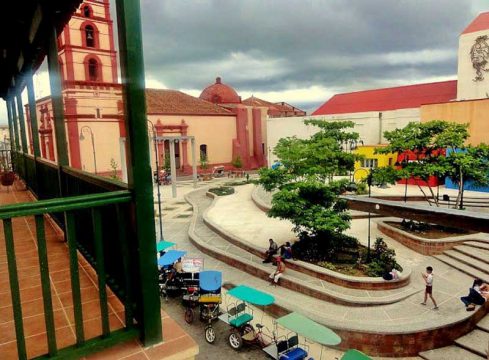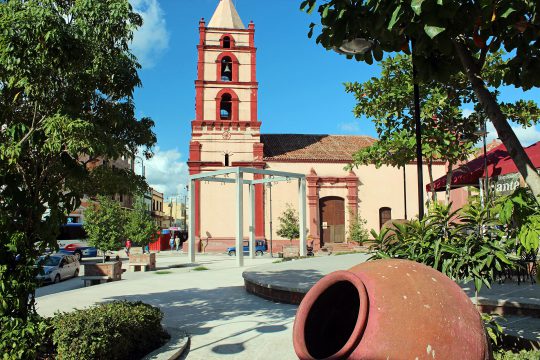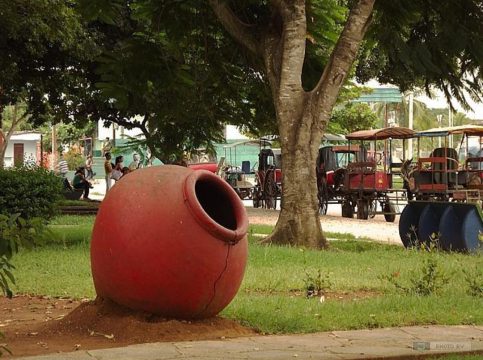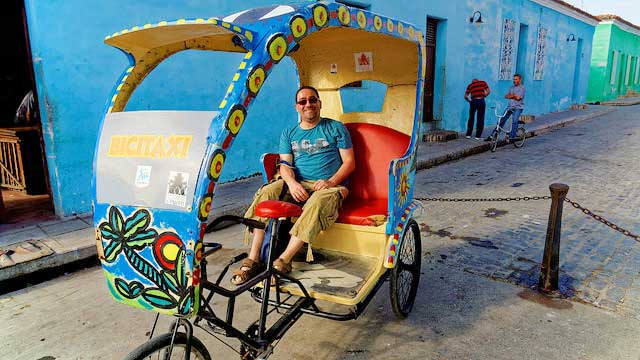“There’s room for three in every bicycle” recites a famous Spanish singer describing one of the many heritage holiday destinations in Cuba. Tricycles and Bicytaxis as they are commonly named are the norm in most colonial cities where narrow and uneven streets make it difficult for cars to roll. That’s is the case of Camaguey, another of Cuba’s UNESCO goddaughters, with a rich colonial past and tricky urban planning set over to deceive greedy pirates in the 16th Century.
Many ways of exploration your will find in this land of superb people and the “best spoken Spanish dialect in the island”, however a colonial panoramic tour is always advised to those planning to make of Camaguey holidays more than a mere souvenir hunt.

Founded in 1514, as the village of Santa Maria del Puerto Principe, the old centre of Camaguey was deliberately built on an irregular pattern, intended to confuse foreign attackers. This is the first fact you will learn on any of the city tours, which in the last few years have become more popular since tourists prefer to take the whole day orientation on a man-powered tricycle.
Imagine a rusty three-wheel artefact fused from home-made parts, a smiley and skinny but solid driver and a windy colonial grid plan to puzzle in.
This is the beginning of a Bicytaxi city tour orientation in Camaguey which second most important fact to learn about, is the role played by the earthen-ware jars (tinajones) on keeping first oil and presently water at every home. They are perhaps the most outstanding icons of the city.
The excursion will normally start from the city centre, between the Tinima and Hatibonico Rivers. There, facing la Soledad church, a bunch of three riders bikes will concentrate as ready for a colourful parade. Many of them are decorated with international flags so when they depart in groups is like the UN had summoned one of its meetings in this picturesque village.
Ornamented with some of the most beautiful artworks in Latin America, la Soledad is the first of four churches, available for tourists to appreciate during the tour. Iglesia del Carmen and la Merced will follow and so the Cathedral at Ignacio Agramonte Square.
Unlike other of Cuba holiday destinations, anyone might get confused in the grid plan and in a few seconds you can find yourself in like four streets at once, la Libertad Avenue, Marti, Gomez, Republica you name them.
Once in Agramonte Park the bike will stop for a while. You might be lucky enough to catch a band on a street celebration or local children scoring two or three runs for their improvised baseball teams. Either show would provide solid photo material for your Cuba travel albums.

This is the location of the house of la Trova also, a true shrine of traditional music and dancing.
In the Avenue la Libertad a lot of gift shops will be available for purchasing local art. There you will probably learn a third fact, the contribution of Camaguey’s people to the emancipation from Spanish ruling.
The local pedalling will also take you to Ignacio Agramonte Museum, the birthplace of “el Mayor” (the Major) the town’s hero.
The Principle Theatre counts among the highlights to visit featuring the world famous “Ballet of Camaguey”.
Some tours might extend to the Casino Campestre near the Baseball Stadium and city Zoo.
Although no visitor attraction’s entry fee will be covered by the mostly panoramic excursion, the ride is totally worthwhile.
You might be probably prompted to drink “water of Tinajon” a local tradition to add in your collection of facts, “whoever drinks Tinajon water will never want to leave town.


